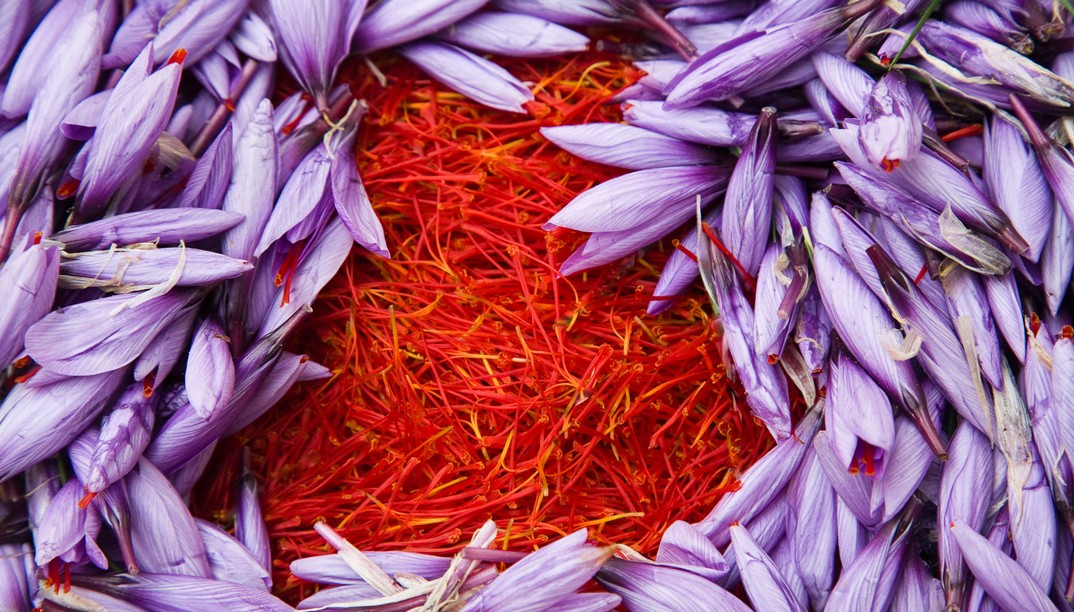
The saffron is constituted by the stigmas, joined or not in the style of the flower of the crocus sativus. The flowering is autum beginning and it is usually two weeks.

The stigmas are three in every flower, od reddish colour and with form of small horn. The stigma once dry possesses an intense flagrance and constitutes what is named saffron.
The saffron has a persisten aroma and flavour lightly bitter. It is the most expensive spice of the world.
 This is because his culture, compilation and manipulation are very delicate for what they do completely to hand. The principal producers of saffron in the world are Spain, Greece, india, Iran and Morocco, being that of top quality cultivated in Spain.
This is because his culture, compilation and manipulation are very delicate for what they do completely to hand. The principal producers of saffron in the world are Spain, Greece, india, Iran and Morocco, being that of top quality cultivated in Spain.
The saffron is one of the essential ingredients in the spanish kitchen, as for example in the famous paella, in wich he is the prinpal cause in charge of his characteristic yellow colour. Is used in kitcen in France for the bouillabaisse, in Italy for the risotto, in England in the biscuit of saffron, in Sweden for the bred of Saint Lucia, in India in ice cream.
Also it is used in the making of some liquors, as the Chartreuse.
The experienced users on the use of saffron on the kichen use it usally ground and not to have so to break the filaments in the mortar to extract all his properties on having dissolved it.
The saffron has been used in medicine by his properties carminatives. In the Middle Age it was used to treat the respiratory, stomach and mestrual complaints. In the Ancient Egypt it was used like aphrodisiac and as digestive stimulants. At present the carotenoids of the saffron have demonstrated in scientific studies to be anticarcinogenic.
